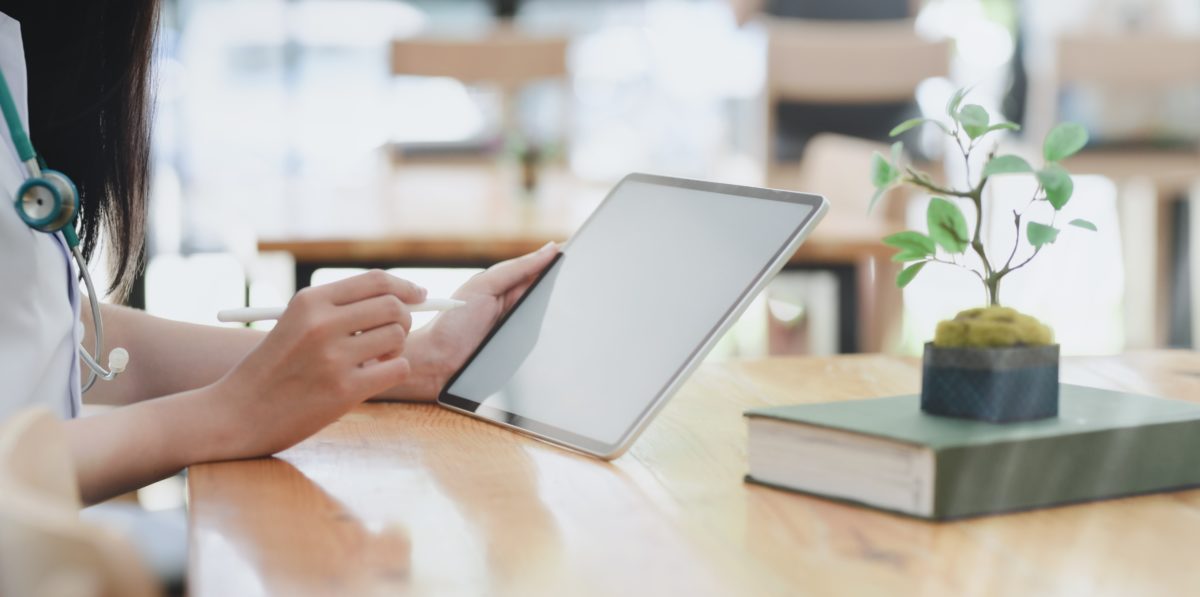Kotidigi integration platform enables telemonitoring the health status of home care clients
2.1.2023
Kotidigi integration platform in an innovation originating from Tampere, hoped to be adopted as widely as possible. The platform combines home and remote care services, and the data generated while conducting those processes. It is utilised to make the everyday life smoother for both the elderly living at home and healthcare professionals taking care of them.
One nurse or caregiver takes care of many kinds of clients – that is how home care of the elderly is usually organised in Finland and elsewhere in the world, too. Problems arise when each client has their own medical measuring devices – and the City of Tampere has initiated a solution.
– There was a need to make an integration platform, which enables the care personnel to easily see what is the situation with each client, says Jarkko Lumio, Planning Manager at the City of Tampere.
The Kotidigi platform is made in cooperation with Solita and Mediconsult. It was a pilot project, and now the development continues with e.g. device suppliers and other health tech ecosystem operators. The City of Tampere will require in the prospective public tenders, that all devices meet the data transfer standard HL7 FHIR (Fast Healthcare Interoperability Resources) and are thus capable of generating data for the platform.
How to spread the innovation?
The Kotidigi integration platform is deliberately easily-deployable, because of the IPR strategy chosen by Solita. The platform is available for the Finnish public sector, to be further developed – with Solita or without. For international business, the IPR belongs to the consortium of Solita and Mediconsult.
– Solita is a globalising company. We are able to develop services efficiently in public-private partnership in Finland, and when we go abroad, we’ll reconsider the IPR model we’ll use, says Risto Kaikkonen, Director at Solita Health and Wellbeing Division.
Because of the shared IPR, the Kotidigi platform would have excellent opportunities to be transferred from Tampere to the new wellbeing services counties (starting in the beginning of 2023).
– Wellbeing services counties are considering similar platform procurements. To get the Tampere-based innovation as widely adopted as possible, it would need more cooperation between public operators, says Fia Saaristo, Business Line Manager at Mediconsult.
Cooperation between the City and companies
To ensure the further development of the integration platform, the aim is to create an ecosystem – and a widely accepted business model for the platform. Lumio is suggesting a model where a national supplier would tender the devices and then offer them to the wellbeing services counties for leasing, with access to the Kotidigi platform.
The Kotidigi project started during the Smart Tampere program which was looking for various ways of cooperation between the City and the private sector to enhance business. The business aspect is still strong; the platform concept can be transferred to home care into many other areas, like top-level sport.
– If a company takes up this standard, no matter what their size, it can connect to a platform. This makes the integration platform attractive for all sizes of enterprises, says Kaikkonen.
International standard may open the company a way to global market.
End user: the home care client
The Kotidigi project took into account the needs of healthcare professionals, society and companies. Above all, the integration platform serves the needs of the end user; the elderly living in their own homes. The platform allows integration of many kinds of devices and utilisation of data.
– The platform enables telemonitoring basic functions like blood pressure or blood sugar, but also client’s mobility or nutritional levels, etc. There is a lot of potential measuring devices, says Saaristo.
Telemonitoring doesn’t mean that the elderly wouldn’t be visited by anyone anymore, quite the contrary. Healthcare professionals have have better opportunity to focus on their clients if their time is not consumed on examining data. And there are many other areas of healthcare that the system is applicable as well.
– For example, a working-aged patients may need telemonitoring when they are back from hospital after an operation, or a child may have measurements to keep an eye on. If the health care centre happens to be far, telemonitoring is often a more comfortable option, Saaristo says.
Less hospital days and emergency calls
By using the integration platform it would be possible to save the amount of hospital days and emergency calls that home care clients make. Potential savings are made when telemonitoring data helps prevent problems in advance, or patients may be sent home from hospital sooner because they’ll still be telemonitored.
– When the home care has a more complete picture of client’s situation, it might be possible to resolve issues even without hospitalisation, states Lumio.
There are many knowledge management tools in development for the hospital information systems. They use data from the various healthcare systems, but also may bring data from smart devices. Based on collected and refined data, it is possible to make observations, either in individual or population level.
– In population level we reach high effectiveness; it is possible to for example to make changes in healthcare strategies or find new target groups for healthcare measures. And this all begins when we have a way to gather information from different sources, says Saaristo.
Author: Päivi Stenroos
Kotidigi, short video (English subtexts)